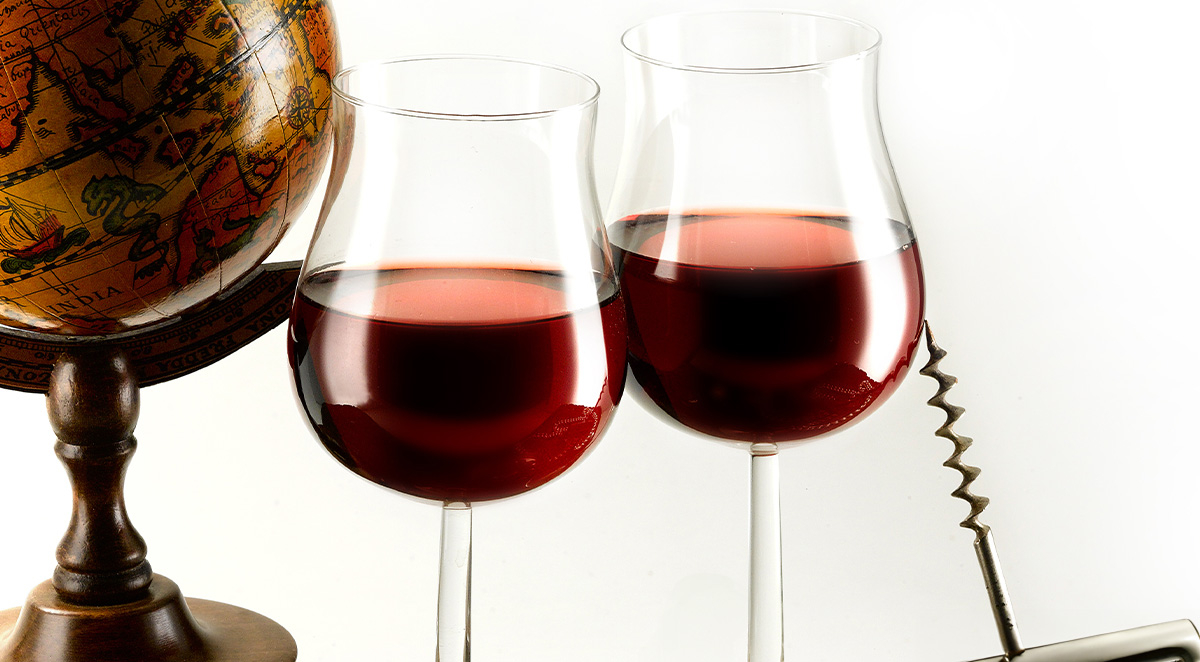Old World Wine Traditions
The term "Old World" refers to regions in Europe and the Middle East where winemaking has been practiced for thousands of years. The rich heritage of these countries plays a significant role in the wines they produce today.
1. France: The Pursuit of Terroir
France is arguably the most renowned wine-producing country, known for its dedication to the concept of "terroir." Terroir refers to the environmental factors—soil, climate, and topography—that affect the taste of wine. French winemakers believe the land itself shapes the identity of their wine, and the country's laws protect this philosophy through strict regulations.
- Bordeaux: Famous for its blends, Bordeaux wine often carries a mix of Cabernet Sauvignon, Merlot, and Cabernet Franc. French tradition emphasizes blending as a way to create balance and complexity.
- Burgundy: In Burgundy, the focus is on single-varietal wines, primarily Pinot Noir and Chardonnay. The wine’s flavor is believed to be a pure reflection of its specific vineyard, with winemakers celebrating the individuality of each small plot of land.
France’s wine culture extends beyond the glass. The French believe that wine should be paired carefully with food, and traditional meals often come with specific wines meant to complement the flavors. In fact, the phrase “wine and dine” holds particular importance in French cuisine, where wine is considered a part of the meal, not just a drink to accompany it.
2. Italy: Wine as a Way of Life
In Italy, wine has been a part of everyday life for millennia. It's more than a drink—it's a cultural staple that accompanies meals, celebrations, and even religious ceremonies. Each region in Italy brings its own flair to winemaking.
- Tuscany: Home of Chianti and Super Tuscan wines, Tuscany’s wine making traditions date back to the Etruscans. A focus on Sangiovese grapes characterizes this region, with producers blending it with other varieties for complex, age-worthy wines.
- Piedmont: In the north, Piedmont is celebrated for Barolo and Barbaresco, wines made from the Nebbiolo grape. These wines are traditionally aged for several years before release, with patience considered a virtue in the production process.
Italian winemakers are known for their adherence to tradition, but they also embrace modern innovations. In regions like Tuscany, there has been a rise in biodynamic winemaking, where the vineyard is treated as a living organism.
This holistic approach emphasizes sustainability and environmental harmony, showing that even ancient traditions can evolve to meet modern demands.
3. Spain: Aging with Patience
Spain is known for its long tradition of aging wines. The country has strict classifications that define how long a wine must be aged before release.
- Rioja: In Rioja, winemakers produce wines categorized as Crianza, Reserva, and Gran Reserva, based on the time spent aging in barrels and bottles. Tempranillo, the region’s star grape, is shaped by this extended aging, gaining complexity and depth over time.
- Sherry: In Andalusia, Sherry is made through a solera system, where young wines are blended with older ones. This method creates a consistent style and flavor, with some Sherries aged for decades.
Spain’s wine culture also reflects its vibrant social life. Spaniards often enjoy wine during long meals that emphasize community and conversation. The tradition of “tapas y vino,” small plates of food paired with wine, highlights the importance of social dining in Spain. Wine isn’t just a drink—it’s a means of bringing people together.
4. Germany: Precision in Winemaking
Germany's wine culture is built on precision, with winemakers focusing on cool-climate varieties like Riesling. German Rieslings are prized for their balance of sweetness and acidity, with the best examples coming from regions like the Mosel, where steep vineyards provide ideal growing conditions.
- Riesling: German winemakers are renowned for their ability to create Rieslings that range from bone-dry to lusciously sweet, with each expression reflecting the winemaker’s skill in managing the wine’s natural acidity.
German wine culture is also notable for its seasonal traditions. During the fall harvest, many regions celebrate with wine festivals known as "Weinfests." These lively events feature tastings, parades, and local foods, creating a communal atmosphere that celebrates both the wine and the people who produce it.
New World Wine Traditions
While the Old World regions are steeped in history, New World countries like the United States, Australia, and South Africa are more experimental and less bound by tradition. However, they have created their own practices that reflect their distinct climates and cultures.
5. United States: Innovation and Freedom
The United States has become a significant player in the global wine scene, particularly in California. American winemakers are less restricted by laws than their European counterparts, allowing for greater creativity.
- California: Known for bold, fruit-forward wines, California is the center of American winemaking. Napa Valley is celebrated for its Cabernet Sauvignon, while Sonoma excels in Pinot Noir and Chardonnay. Winemakers in California often use modern technology to enhance production and explore new techniques like biodynamic farming and natural winemaking.
- Oregon: In contrast, Oregon's Willamette Valley is renowned for its cool-climate Pinot Noir. The focus here is on sustainable farming, with many wineries practicing organic and biodynamic agriculture to reflect the state’s commitment to environmentalism.
6. Australia: Shiraz and Sunshine
Australian wines are defined by the country’s sunny, warm climate. Shiraz is the flagship grape, known for its bold, spicy, and fruit-forward wines. Winemaking in Australia blends tradition with innovation.
- Barossa Valley: One of Australia’s oldest wine regions, Barossa is known for its powerful Shiraz wines. Winemakers here often age their wines in both French and American oak, adding layers of complexity.
- Hunter Valley: This region is famous for its Semillon, a white wine that starts crisp and evolves beautifully with age, sometimes lasting decades.
Australian wine culture is laid-back, reflecting the country’s relaxed approach to life. Wine is often enjoyed with casual meals, and outdoor barbecues are a popular occasion for uncorking a bottle of Shiraz or Chardonnay.
7. South Africa: A Blend of Old and New
South Africa’s wine history dates back to the 17th century, but it has truly flourished in recent decades. The country combines Old World techniques with New World innovations.
- Stellenbosch: Stellenbosch is South Africa’s premier wine region, known for its Bordeaux-style blends and distinctive Pinotage—a cross between Pinot Noir and Cinsault. The region's winemaking often balances tradition with sustainability, as many producers focus on environmentally friendly practices.
South African wines are often paired with the country’s rich culinary traditions, including braai (barbecue) and dishes infused with local spices. Wine is an essential part of these meals, bringing together South Africa’s diverse cultural influences in both food and drink.
Wine Traditions From Lesser-Known Regions
While the Old and New World dominate the global wine conversation, other regions have rich traditions that are worth exploring.
8. Georgia: The Birthplace of Wine
Georgia, located at the crossroads of Europe and Asia, is believed to be the birthplace of wine. Winemakers here use a traditional method that dates back 8,000 years, fermenting grapes in clay vessels called qvevri.
- The qvevri method allows for natural fermentation without added yeasts, creating wines that are unfiltered, earthy, and rich in tannins.
- Georgian wines, particularly their amber wines (orange wines), have gained attention in recent years for their ancient yet innovative approach.
9. Argentina: Malbec and High-Altitude Winemaking
Argentina, particularly the Mendoza region, is famous for its Malbec. The country's high-altitude vineyards, some of the highest in the world, create wines with intense flavors and balanced acidity.
- Malbec’s deep, fruity profile with notes of blackberry and plum is iconic. Argentine winemakers often age their wines in oak, adding complexity and structure.
- The Andean climate, with its warm days and cool nights, allows the grapes to ripen slowly, preserving acidity and producing elegant wines.
10. Portugal: Port and Douro Valley Traditions
Portugal is known for its fortified wine, Port, which comes from the Douro Valley. The tradition of producing Port dates back centuries, and the wine is known for its rich sweetness and high alcohol content.
- Port Wine: After fermentation, brandy is added to the wine to stop the fermentation process, leaving residual sugar and boosting the alcohol content. Port is then aged in oak barrels, sometimes for decades, before release.
- Vinho Verde: Another unique Portuguese wine is Vinho Verde, a light, effervescent wine often enjoyed young. Its crisp and refreshing nature makes it a popular choice in Portugal’s warm coastal regions.
11. Austria: A Focus on Gruner Veltliner
Austria's wine traditions are relatively lesser known but deserve attention, particularly for the country's dedication to producing high-quality white wines.
- Gruner Veltliner: Austria’s flagship white wine grape, Gruner Veltliner, is known for its versatility and distinctive flavor profile, which often includes hints of white pepper, citrus, and green apple.
Austrian wines are often enjoyed with hearty dishes like Wiener Schnitzel, and the country’s wine culture is intertwined with its rural traditions, where many families still produce wine on a small scale.
Wine Traditions and Rituals Across Cultures
Wine is not just about taste and production methods; it’s also deeply intertwined with cultural rituals and celebrations. Across the world, various customs honor the importance of wine.
12. The Toast: A Universal Gesture
In many cultures, offering a toast before drinking wine is a sign of respect and celebration. This tradition dates back to ancient Greece and Rome when raising a glass to the gods was a way to honor them.
- France: In France, it's customary to make eye contact with each person while toasting to show sincerity. The French toast with the word "Santé," meaning "to your health."
- Spain: Spaniards often say "Salud" before taking a sip, also meaning "health." However, the Spanish take it a step further by insisting on maintaining eye contact during the entire toast to avoid bad luck.
- Germany: In Germany, "Prost" is the go-to word for toasting, and it’s common to clink glasses with everyone at the table.
13. The Harvest Festival: Celebrating the Grape
Many wine regions celebrate the grape harvest with festivals and parties, marking the end of the growing season and the beginning of winemaking.
- La Vendimia, Argentina: The Grape Harvest Festival in Mendoza is one of the most famous in the world, featuring parades, music, and, of course, wine tastings.
- Fête des Vendanges, France: In Burgundy, the harvest festival is a longstanding tradition where wine producers and visitors come together to celebrate the new vintage.
- Thanksgiving, United States: While not a harvest festival per se, Thanksgiving has become synonymous with wine pairings, particularly in the United States, where wine regions like California play a significant role in the holiday.
Experience Wine Traditions at Metro Wines in Asheville
Exploring wine traditions from around the world offers a unique way to experience different cultures. From the ancient qvevri of Georgia to the refined practices of Bordeaux, these traditions are more than just winemaking techniques—they are a reflection of history, geography, and community.
At Metro Wines in Asheville, we bring many of these global traditions to you. Whether you’re looking for a bold Napa Cabernet, an elegant French Burgundy, or a crisp Vinho Verde, we have wines that represent the diversity of winemaking across the world. Visit us today to discover a bottle that carries with it the rich tradition of its region.
Contact us for more information about our wine, or come by our shop in Asheville!


